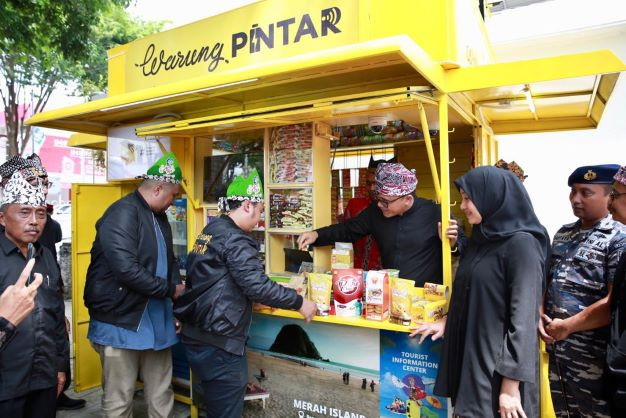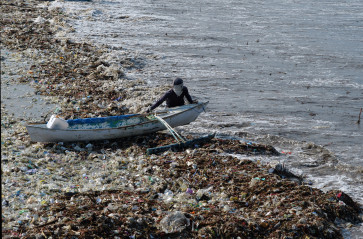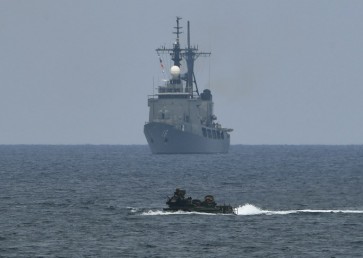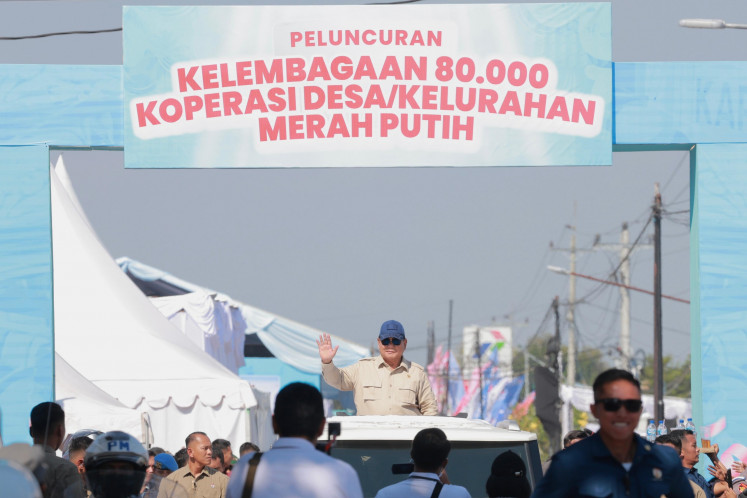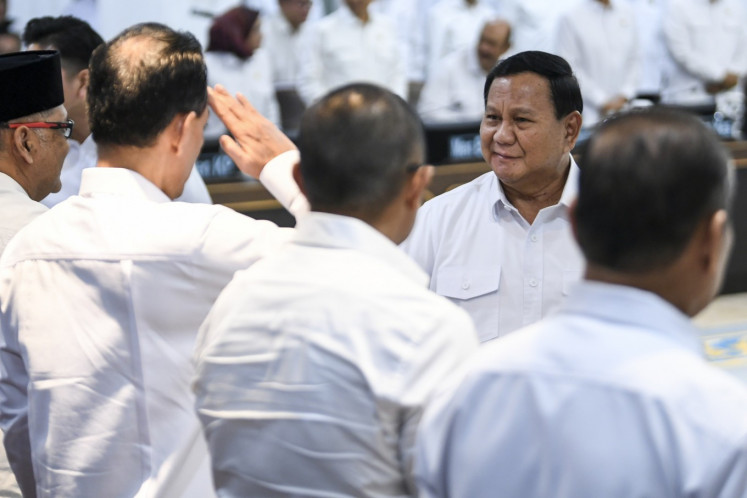Popular Reads
Top Results
Can't find what you're looking for?
View all search resultsPopular Reads
Top Results
Can't find what you're looking for?
View all search results‘Warung’, the face of community economy, and its empowerment
The value of credit extended to MSMEs in Indonesia amounted to 7 percent of gross domestic product, relatively low compared to that in neighboring countries which exceeds 15 percent.
Change text size
Gift Premium Articles
to Anyone
W
hen was the last time you visited a warung (traditional stall)? For some urban people, going to a convenience store is the preferred, rational choice. Air-conditioned shopping rooms, friendly service and shopping convenience are advantages that cannot be missed.
However, do you know there are more than 1.9 million micro, small and medium enterprise (MSME) stalls that dot the archipelago in various forms (stalls, grocery, shops, taverns and others), which always serve the needs of our society every day?
The warung is the true face of our people's economy. Behind the stalls, there is an economic cycle, both in terms of the distribution of goods/services, circulation of money/payment systems and sources of livelihood, the mainstay of the community's business sector when it is not accommodated in the formal sector or other impacts (e.g. layoffs).
The factor of their presence in suburban and rural demographics, the emotional closeness between buyers and sellers during transactions and the choices of payment installment mean the existence of MSME stalls are still in-demand and continue to be needed by the community.
The government and policymakers should always take care of or even be able to increase the MSME class of our stalls. During the last pandemic, the economic contraction also affected the lifeblood of stalls, which resulted in reduced sales turnover. The government at that time provided cash assistance to maintain buying/selling power and the continuity of the stall business. The current post-pandemic economic recovery period is the right time to seize the momentum and utilize the potential of MSME stalls.
Capital is a classic problem for MSMEs, and the stalls business is no exception. Data from Bank Indonesia (BI) state the value of credit extended to MSMEs in Indonesia amounted to 7 percent of GDP, relatively low compared to that in neighboring countries, which exceeds 15 percent. In addition, the portion of MSME loans to total bank credit in Indonesia is around 20 percent, still below the 30-percent target directed by the President in 2024.
However, the good news is banking intermediation for MSMEs continues to improve. MSME credit growth amounted to 8.63 percent (yoy) in March, supported by the realization of the distribution of MSMEs loans (KUR) of Rp 30.31 trillion (US$2.1 billion) as of March 31. From a policy perspective, BI implemented an increase in macroprudential policy incentives to encourage credit/financing growth banking to priority sectors that have not yet recovered, especially KUR.
These policies include increasing the total amount of macroprudential incentives that can be received by banks, from previously a maximum of 200 basis points (bps) to a maximum of 280 bps (this figure consists of priority sector incentives, KUR/MSMEs loans and green credit). Especially for KUR/MSMEs loan distribution incentives, it increased twofold to a maximum of 1 percent.
Meanwhile, from the MSME side, they are also encouraged to use an information system for recording financial information so that MSME businesses are more bankable and support inclusive finance.
Not only encouraging from a policy point of view, BI is also involved directly in the real sector to help empower the potential of MSME stalls. The existence of a central bank in the real sector is support for BI's main policies as mandated by the previous law. Also, the most-recent mandate in the Development and Strengthening of the Financial Sector (P2SK) Law, namely helping to encourage economic growth, confirms the consideration of the presence of a central bank in the social economy, for example, by empowering MSME stalls.
If sorted, MSME stalls can be divided into beginner stalls and developing stalls; the characteristics of the two are of course different. Beginner stalls are generally initiated by people who already have the intention to start a stall, but the form of the shop is perfunctory. The characteristics of this stall, including not having a lot of merchandise; the location of the shop, which relies on makeshift/less strategic land; as well as the managerial capabilities of the shop, are still classified as in the pilot stage. Many of these types of stalls are filled by people who are vulnerable to economic turmoil, for example subsistence groups and laid-off workers.
Meanwhile, developing stalls are owned by the community, have been around for a long time but usually experience stagnation. Stagnation can come from a lack of capital or decreased sales. In terms of the latter, many developing stalls have experienced a decline in turnover due to a contraction in retail sales due to the COVID-19 pandemic over the past four years. Strategic stall locations, sufficient merchandise inventory and stall managerial skills are already present in the middle stage, and are the characteristics of a developing shop.
In addition to capital support and equipment for stalls, beginner stalls generally require deeper technical assistance than developing stalls. The technical assistance covers basic business knowledge, from goods management (inventory), basic accounting (sales and purchase management) and layout/display of goods to techniques for serving buyers. The pattern of mentoring from established stalls to several developing and novice stalls was implemented to provide field guidance and real solutions to the problems stalls often face.
In particular, the supply of merchandise can be improved by partnering with several suppliers, who have experience in modern retail management. This is important, considering the profit of the shop depends on the length of the supply chain of the goods.
MSME stalls are also encouraged to be able to adapt to changing times. Stalls are educated to use a modern shop management platform, where the three main processes of buying, selling and financial management are embodied in an application platform.
Looking at the retail sales survey (SPE) data released by BI, the prospects for stalls and all other forms of retail in general remain bright. Although stalls are not the only variable for calculating the survey, the direction of their movement can be reflected in this SPE. Retail sales performance on an annual basis was predicted to remain strong in April. This was reflected in the April real sales index (IPR) of 241.6, or a positive growth of 1.0 percent (yoy).
With the recovery of the national economy, the momentum of several religious holiday celebrations and the expectation that prices of goods would be under control by the middle of 2023, retail sales of goods will remain strong. Strategies and innovations in access to financing for MSME stalls continue to be encouraged.
The idea of providing credit facilities in the form of merchandise to MSME stalls in collaboration with banking/financial services, as well as suppliers/distributors of goods, can be explored.
***
An analyst at Bank Indonesia (BI). The views in this article are his own.

